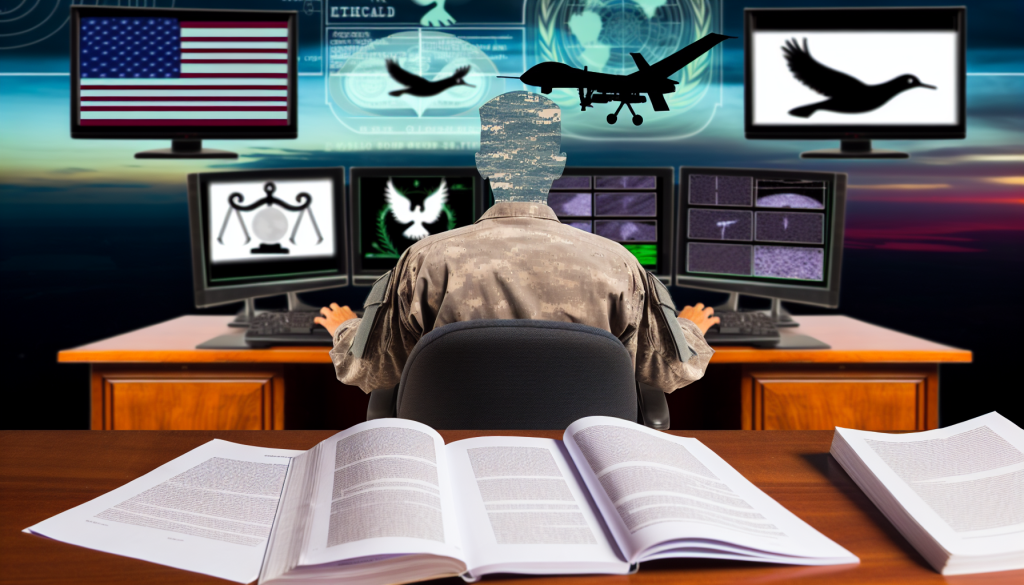The Ethical Terrain of Armed Drones: A Call for Restraint
The emergence of armed, uninhabited aerial vehicles, commonly known as drones, has sparked intense ethical debate worldwide. As governments increasingly deploy these aircraft for military operations, questions about the moral justification of their use linger. Armed drones are designed to carry weapons, operate without a human operator, and rely heavily on onboard sensors and communication technologies. Ever since the U.S.-led War on Terror began in late 2001, drone warfare has been viewed through the lens of ethical quandaries and moral injuries.
The Landscape of Drone Warfare
Drones have become a prominent tool for military forces, most notably the United States and the United Kingdom, as they target suspected terrorists in remote territories. The ongoing Russo-Ukrainian War further highlights the pivotal role drones play in modern conflicts. As of 2023, around 19 countries have conducted drone-based airstrikes, six possess drone development programs, and 29 have imported armed drones. This proliferation raises concerns, particularly with the prospect of artificial intelligence (AI) technologies assuming more functionalities in drone systems.
The Moral Ambiguity of Drone Usage
While drones are not inherently malevolent technology, moral dilemmas arise from their application. The practice of drone warfare often intensifies broader issues, such as unjust violence in international relations, indiscriminate methods of warfare, and inadequate human oversight in critical decision-making. Moreover, the psychological burden imposed on drone operators, who may experience significant moral injury after engaging in killing from afar, is of growing concern.
Going Beyond Legal Obligations
International laws of war, such as prohibitions against civilian targeting, represent a baseline for moral conduct. For responsible drone operation, states should hold themselves to higher moral standards than simply adhering to legal requirements. Achieving this can be addressed through five guiding principles aimed at promoting responsible drone use.
1. Combined Arms Principle
The first principle advocates for deploying armed drones only in conjunction with traditional military assets, such as ground troops or manned aircraft. This approach deters frequent recourse to violence by requiring military personnel to accompany drone operations, thereby limiting unjustified acts of aggression. By ensuring that drone usage occurs alongside other combat assets, governments may exercise greater restraint in their military decisions.
2. Urgent Other-Defence Principle
The second principle emphasizes the need for drone deployment solely to protect individuals facing immediate threats of serious harm. This principle distinguishes between protective drone operations, aimed at assisting personnel under attack, and offensive actions against distant targets. The latter scenario complicates moral justification, as individuals who are not actively threatening others represent a more ambiguous ethical landscape.
3. Operator Discretion Principle
Recognizing the emotional toll on drone operators, the third principle empowers them to refuse participation in missions they believe to be morally unjustifiable. Many drones provide the ability to closely observe targets before engagement, which can complicate the decision to kill. By allowing operators to abstain from engaging when they perceive moral wrongdoing, the military can better support their personnel’s psychological well-being.
4. Human Agency Principle
Critical functions of drone systems must remain under meaningful human control. Reliance on AI for decision-making could lead to unjust outcomes without anyone being held accountable. Human oversight is vital to ensuring that moral judgments and responsibilities are considered in the operation of armed drones. This principle asserts the importance of preserving human judgment, as AI lacks the capacity for moral decision-making based on human values and lived experiences.
5. High Transparency Principle
The final principle calls for robust transparency regarding the circumstances under which armed drones are deployed. Public disclosure of operational details—including the “who,” “why,” and “how” of drone use—enhances accountability and critical scrutiny. Transparency can deter states from using drones in ways that are morally questionable or unjust, allowing for more informed public discourse about their implications.
Engaging in Public Discourse
The principles outlined above serve as an invitation for policymakers, non-governmental organizations, and individuals to engage in a crucial conversation around the ethical use of armed drones. By adhering to these guidelines, there’s potential to mitigate some of the injustices currently associated with drone warfare.
In exploring the implications of armed drones, we find an intricate web of ethical concerns that demand our attention. As drone technology continues to evolve, a responsible approach will require ongoing dialogue and ethical scrutiny, ensuring that these powerful tools are wielded with caution and a commitment to moral integrity.

